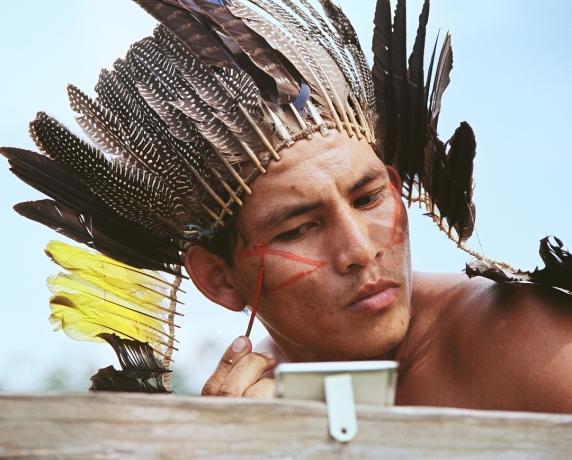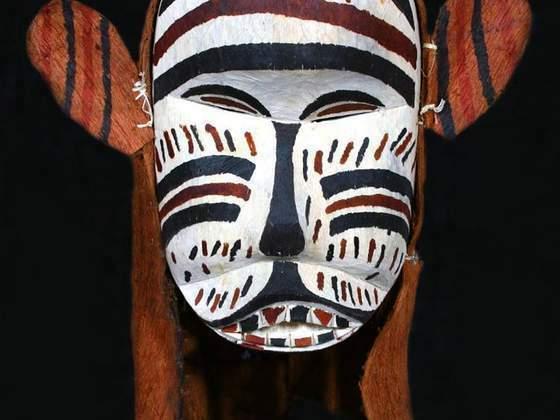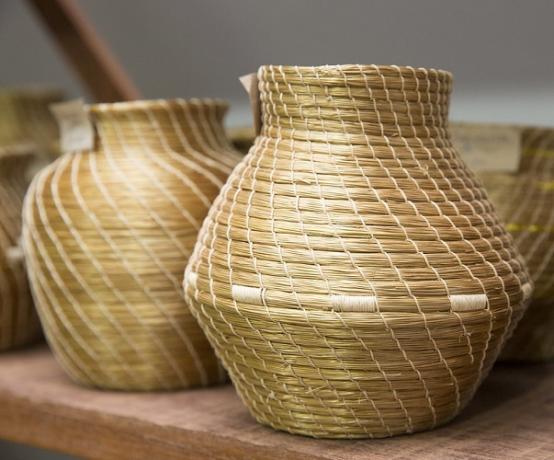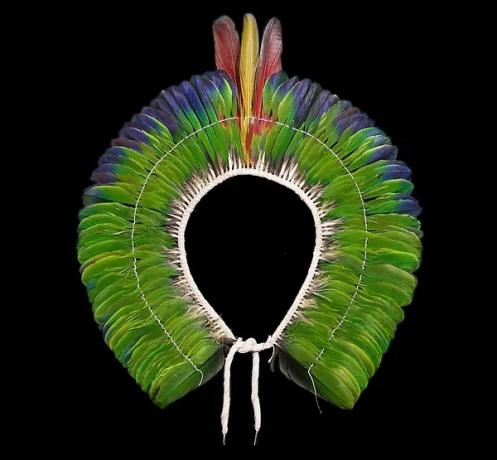Brazilian indigenous art is made up of everything that is produced by the country's indigenous ethnic groups and represents the culture and tradition of these peoples. It is a fundamental cultural element, produced by tradition and preservation of culture.
The conservation of indigenous art is a way of keeping alive the cultural traditions of different ethnic groups. Brazilian indigenous people, who already produced their art even before the arrival of Portuguese colonization in the parents.
Indigenous art is very rich, composed of several elements loaded with ancient symbologies and sacred wisdom received from their ancestors.
The indigenous productions most common to most Brazilian ethnic groups are: ceramics, body painting, masks, basketwork and feather art. Decorative and utilitarian objects, adornments, accessories, weapons and musical instruments are also part of the art produced by indigenous peoples.
Ceramics
Ceramics are used in many ways in the culture and art of most indigenous tribes: for the manufacture of objects and utensils or as decoration.
Ceramics are one of the materials most used by indigenous people, probably due to the versatility of the material. It is used in the manufacture of various household items, such as jars, pans and containers for storing food.
The material is produced by indigenous people - almost always by women - from a mixture made of clay and other natural inputs. Once ready, the objects are heated to make them more resistant.
Marajoara Ceramics
Marajoara pottery is produced by indigenous people who initially inhabited the Ilha de Marajó, in the Amazon River region, in the state of Pará.
It is considered one of the oldest ceramic productions in the country and even today the indigenous people of this region maintain the culture of producing Marajoara ceramics.
They are characterized by the frequent use of relief paintings in warm, earthy colors.
 Cerâmica Marajoara: one of the oldest artistic traditions of Brazilian indigenous peoples.
Cerâmica Marajoara: one of the oldest artistic traditions of Brazilian indigenous peoples.
Body painting
Body painting is used by indigenous people at special times, such as in rituals and celebrations, and it varies according to the occasions. Each indigenous ethnic group has a specific type of painting, which is representative and identifies the characteristics of the tribe.
The paints used in body painting are obtained from elements of nature, such as the extraction of oils from seeds and flowers.
The paintings have different meanings and can represent the places or functions occupied by each member of the ethnic group, as well as being used to represent members of the same family.
Likewise, paintings are different for women and men. Married women, for example, use specific paintings to identify their commitment to other members of the tribe.
 Indigenous body painting (ethnicity Kaxinawa/Acre).
Indigenous body painting (ethnicity Kaxinawa/Acre).
masks
Masks are an important part of indigenous culture, being used in rituals and festivities. The use and production of masks is loaded with symbologies and these objects can represent supernatural beings and ancestors, considered the greatest holders of wisdom of the indigenous people.
Some ethnic groups use masks in their rituals as a way to bring joy and good feelings to the spiritual entities that had conflicts with the indigenous people in past times, as a way to appease these conflicts.
The Xingu Indians, for example, use masks in rituals to protect and connect with the protective spirits of the tribe.
The masks made by each tribe have their own characteristics that are representative of the identity of the ethnic group that produces them. They are generally made from tree bark and can be adorned with natural dyes, fibers and animal plumage.
 Mother of Wind Mask, produced with molongó wood, genipapo and annatto (collection of the Museum of Indigenous Art). It is used in rituals.
Mother of Wind Mask, produced with molongó wood, genipapo and annatto (collection of the Museum of Indigenous Art). It is used in rituals.
basketwork
The baskets produced by the indigenous people were initially used for storage and transport, mainly for food. Nowadays, they are also sold as decoration items.
They are made from natural materials such as leaves from different trees (depending on the region inhabited by the tribe) and materials such as straw, reeds and palm leaves.
In general, basketwork - also made almost always by women - is made from wefts with the leaves and natural fibers used.
 Indigenous basketwork.
Indigenous basketwork.
feather art
Feather art is produced with feathers and feathers from different animals. It is quite old, but it is still highly worshiped by Brazilian indigenous people.
Feather art objects are mainly made for use as adornments on props used at times of festivities or in fighting rituals. Headdresses are the best known example, but feather art can also be used to make other accessories, weapons or even instruments.
As with body painting, feather art can also represent different ethnicities or roles occupied within the tribe, as a kind of hierarchical marking. For example, the largest and best-adorned headdresses are those worn by chiefs, chiefs, and older members of a tribe.
 ethnic headdress Kayapo, who lives in the state of Pará. It is used in special rituals (collection of the Museum of Indigenous Art).
ethnic headdress Kayapo, who lives in the state of Pará. It is used in special rituals (collection of the Museum of Indigenous Art).
Utensils and props
Indigenous art is very rich and complete. Therefore, with the same natural materials different craft objects are produced.
The materials used in the production of basketwork are also used to make ornaments and decorative objects, which can be decorated with feathers or seeds. Natural paints, made from plants and seeds, are also used for this.
Clay, which is mainly used for the production of ceramic vases, can also be used to make utensils used for cooking.
Materials most used in indigenous art
To produce their art, the indigenous people use natural elements, which represent and preserve their proximity to the richness of nature.
In addition to components coming directly from nature, even the paints used in the paintings are natural, produced from extracts from trees, flowers and plants, such as genipap and annatto.
The most used materials are:
- straw,
- reed,
- vine
- seeds,
- lumps,
- wood,
- clay,
- porongo or gourd,
- animal bones and teeth,
- feathers and feathers,
- plant fibers.
Learn more about indigenous culture and see the meanings of chieftain, shaman and Tupan.
Also read about The Types of Art.
